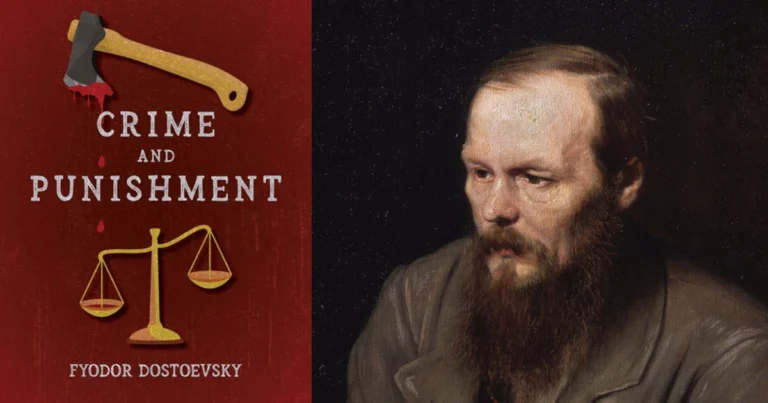The book of laughter and forgetting: A fight against erasure
Some laughter brightens the moment, while others erase it. There are clear, joyful laughs, but also bitter, cynical, and destructive ones. Forgetting creeps in silently, eroding memory like the wind wiping away footprints in the sand. What remains when the past falters under the relentless assault of time and men?
Published in 1979, The Book of Laughter and Forgetting by Milan Kundera is a novel where every page is a struggle against erasure. As an exiled dissident, Kundera constructs a fragmented work where history and the personal intertwine, exploring the power of memory and the tragedy of imposed forgetting.
Let us delve into this fragmented world, where reality dissolves and laughter becomes both rebellion and farewell. What threads connect these scattered stories? What meaning can be given to forgetting when it becomes a weapon?
A book born from exile: the story behind the novel
Milan Kundera, a major figure in contemporary literature, wrote The Book of Laughter and Forgetting in 1979 while living in exile in France. This novel marked his definitive break with his homeland, Czechoslovakia, which stripped him of his nationality in retaliation for his critiques of the communist regime.
The story of the book is inseparable from the events of the Prague Spring (1968), a reformist movement brutally crushed by the Soviet invasion. In this context, forgetting became a political strategy: dissidents, intellectuals and artists opposed to the regime, were erased from archives, their works banned, their names removed from official records as if they had never existed. Facts were rewritten, memories manipulated, and collective memory became a silent battleground.
Kundera’s literary style draws from a tradition influenced by Kafka, Cervantes, and Nietzsche, where memory wavers under the weight of power and absurdity. Through a fragmented structure, he questions identity, language, and how the past survives, or disappears, within collective consciousness.
The fragmented world of Kundera
“The struggle of man against power is the struggle of memory against forgetting.”
Among the novel’s most striking lines, this sentence alone captures its essence: a meditation on the fight against erasure. Kundera depicts a world where the past is constantly rewritten, where memories are forcibly erased or fade under the weight of time.
The novel does not follow a linear plot but is composed of seven distinct parts, connected by recurring themes: memory, forgetting, exile, and the power of language. It begins with the story of Mirek, a man attempting to retrieve old letters to rewrite his past, only to find his efforts futile, an illustration of how history itself is manipulated.
We then follow Tamina, a woman haunted by the memory of her deceased husband, desperately searching for her lost journals, the last remnants of her past. Other characters, such as Jan and Kristyna, navigate a world where laughter is wielded as a weapon and forgetting becomes the only escape.
Through these fragmented narratives, Kundera interrogates the place of the individual within a collective history that seeks to erase them. Each story explores how memory can be altered, erased, or reconstructed, posing a fundamental question: are we the masters of our own memories, or are we prisoners of a past that escapes us?
History, identity, and oblivion: the core of Kundera’s narrative
Milan Kundera weaves his novel around several major themes that intertwine and echo each other, creating a mosaic of reflections on memory, forgetting, power, and exile. Through fragmented narratives, he examines what remains and what disappears, what we choose to remember, and what we are forced to forget.
The fragile weight of memory: who controls the past?
“Forgetting is a form of death always present in life.”
Throughout the novel, Kundera shows that forgetting is never neutral, it can be shaped, directed, and used as a tool of domination. Under totalitarian regimes, faces disappear, events are rewritten, and names are erased from official records as if they never existed. Mirek, who tries to recover old letters to redefine his past, embodies this battle between memory and power. Yet his quest is in vain, what has been rewritten remains irrevocably altered.
But beyond politics, Kundera explores a more intimate form of forgetting: that of lost loves, of fragments of the past that slip away despite ourselves. Tamina symbolizes this struggle, her desperation over losing her husband’s journals reflects a universal anxiety. She is not just searching for objects, but for a past that is slipping through her fingers. Forgetting, in this case, becomes a form of dispossession.
Laughing into the void: The double face of humor
Laughter is omnipresent in the novel, yet it takes on contradictory forms. It can be liberating, an act of resistance against tyranny, a way to escape the ideological seriousness imposed by oppressive systems. But it can also be destructive, a nihilistic laugh that annihilates all meaning and memory.
The most striking example is the scene where children laugh at a man condemned to total oblivion. This is not joyous laughter, but a cruel one, symbolizing the ultimate erasure of an individual. Kundera thus reveals how laughter can be wielded as a tool of power, an instrument of humiliation and annihilation.
Exile and the loss of identity
Exile in The Book of Laughter and Forgetting is both a political and existential condition. Kundera’s characters, like the author himself, are uprooted, severed from their past. But exile is not only geographical, it is also internal. Tamina, lost in a world that no longer belongs to her, embodies the wandering soul, deprived of the landmarks that once defined her.
Exile is also linguistic. Kundera shows how language itself can be a site of exclusion. Power imposes its words, transforms the meaning of discourse, manipulates historical narratives. In exile, one’s native language becomes a relic of the past, a painful nostalgia.
Neuroscience meets literature: the mind in the book of laughter and forgetting
Kundera’s characters embody various facets of human memory, manipulated, fragmented, or painful. Through them, the novel illustrates neuropsychological processes related to memory reconstruction, grief, and defense mechanisms against loss.
Trapped in the past: Tamina’s endless grief
Tamina is perhaps the novel’s most poignant character. Marked by the loss of her husband, she is haunted by his memory and obsessed with retrieving his journals, the last tangible remnants of their past. Her inability to move forward aligns with what psychology terms prolonged grief disorder (Prigerson et al., 2009), where an individual remains trapped in sorrow and attachment to the deceased.
Rewriting the past: Mirek’s futile quest for control
Mirek represents another battle against forgetting: he seeks to erase a part of his past to rewrite it to his advantage. His attempt to retrieve letters from an old love he now rejects reflects a desire to control history.
His behavior aligns with the concept of reconstructive memory, developed by Elizabeth Loftus (1995). Our memories are not precise recordings of the past; they are malleable, influenced by emotions and present contexts. Mirek tries to reshape his past but ultimately fails, illustrating that while individual memories may be rewritten, collective history cannot be infinitely altered.
When laughter turns to cruelty: the dark side of humor
One of the novel’s most disturbing scenes features children laughing as they witness the humiliation of a man condemned to total oblivion. This laughter is not innocent but cruel, symbolizing the ultimate erasure of an individual from collective memory.
This scene evokes the phenomenon of emotional desensitization, where repeated exposure to suffering or violence reduces one’s capacity for empathy. In neuroscience, this can be linked to dysfunctions in the neural circuits related to empathy, particularly in the ventromedial prefrontal cortex and amygdala (Baron-Cohen, 2011).
By portraying this moment, Kundera forces us to confront an unsettling question: when forgetting becomes systematic, does society lose its sensitivity to the erasure of others? When collective memory is rewritten, does it shape a world where individuals become indifferent to history’s victims?
Between novel and essay: Kundera’s unique storytelling approach
A story in pieces: the art of the fragmented narrative
The novel’s structure does not follow a traditional, linear narrative but instead consists of seven seemingly independent parts. This fragmentation reflects the very nature of memory, discontinuous, reconstructed in pieces, always subject to erasure.
Rather than a mere stylistic choice, this disjointedness immerses the reader in an experience of active forgetting. By constantly shifting stories and perspectives, Kundera places the reader in the same unstable position as his characters, unable to hold onto a single, fixed truth.
Fact or fiction? The thin line between memory and invention
Kundera refuses to confine himself to a single genre. Throughout the novel, he blends fiction, philosophical reflection, autobiographical elements, and historical commentary.
This hybrid form serves a precise purpose: by breaking traditional narrative conventions, Kundera illustrates how memory itself is a construction, subjective, elusive, and constantly rewritten.
This technique is reminiscent of Brecht’s concept of distancing, in which the reader is reminded that they are engaging with a literary creation rather than a fixed reality. By doing so, Kundera reinforces the idea that history, too, is a narrative that can be reshaped.
A playful yet profound voice: how Kundera disorients the reader
Irony is one of Kundera’s most potent tools. Instead of adopting a solemn tone when discussing the dangers of forgetting and oppression, he wields a subtle, sometimes cruel humor.
This irony does not trivialize his themes but makes them even more striking: by laughing at tragedy, we perceive it more clearly.
Moreover, Kundera frequently breaks the fourth wall, directly addressing the reader or commenting on his own characters. This metafictional approach deepens the novel’s central question: if even a novel is an artificial reconstruction, what can we truly trust about history?
Themes that resonate: how kundera constructs meaning through motifs
Kundera weaves his novel around recurring motifs that unify its disparate narratives, crafting a profound reflection on memory and oblivion. Laughter, at times liberating and at others destructive, becomes a symbol of memory’s endurance or erasure, while oblivion, ever-present, emerges both as a political weapon and an intimate inevitability. Music, particularly Beethoven’s, is portrayed as a sanctuary where time and memory persist, defying imposed forgetfulness. Through his distinctive style, Kundera does more than narrate oblivion, he stages it within the very structure of the novel, immersing the reader in a world where memory falters and identity dissolves.
A story erased, a story remembered: the paradox of Kundera’s exile
Upon its publication in 1979, The Book of Laughter and Forgetting was immediately recognized as a landmark work, both literarily and politically. Its impact extended beyond fiction, it became a testimony to historical manipulation, a manifesto against enforced forgetting, and a reflection on exile and collective memory.
Banned in Czechoslovakia for its critique of the communist regime, the novel led to Kundera being stripped of his nationality. Exiled in France since 1975, he became a French citizen in 1981 and chose to write in French from then on.
Today, The Book of Laughter and Forgetting remains a seminal work on memory and identity, studied in universities and frequently referenced in debates on historical manipulation. It poses an unsettling question: can we truly own our memories, or are we condemned to watch them shift under the influence of time and power?
Are we the authors of our own history, or merely powerless witnesses to all that fades away?
References
Kundera, M. (1980).The Book of Laughter and Forgetting. Knopf.
Kundera, M. (1988).The Art of the Novel . Grove Press.
Loftus, Elizabeth. Eyewitness Testimony. Harvard University Press, 1996.
Prigerson, H. G., Horowitz, M. J., Jacobs, S. C., Parkes, C. M., Aslan, M., Goodkin, K., Raphael, B., Marwit, S. J., Wortman, C., Neimeyer, R. A., Bonanno, G. A., Block, S. D., Kissane, D., Boelen, P., Maercker, A., Litz, B. T., Johnson, J. G., First, M. B., & Maciejewski, P. K. (2009). Prolonged grief disorder: Psychometric validation of criteria proposed for DSM-V and ICD-11. PLoS medicine, 6(8), e1000121.
Baron-Cohen, Simon. Zero Degrees of Empathy: A New Theory of Human Cruelty. Penguin, 2011.
Halbwachs, Maurice. Les Cadres sociaux de la mémoire. Presses Universitaires de France, 1925.
Television Director
Master’s Degree in Directing, École Supérieure de l’Audiovisuel (ESAV), University of Toulouse
Bachelor’s Degree in History, Hassan II University, Casablanca
DEUG in Philosophy, Hassan II University, Casablanca







